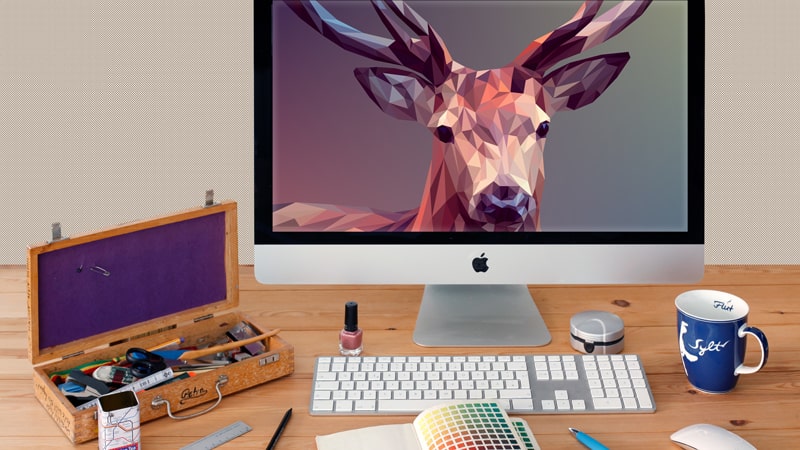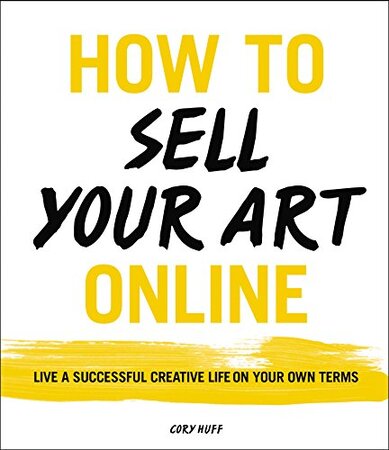Table of Contents
Everything needs design, including advertisements, product packaging, posters, periodicals, and logos. It’s a field with constant demand. Why? Because companies always need designers, whether it’s to produce branding materials or design a flyer for an upcoming event. As a beginner graphic designer find out more about graphic design and understand what considerations you should make when you begin your career. Before we jump into the tips and tricks here are some things you should take into consideration.
1. Aquire core design principles
A visual communication technique called graphic design combines illustrations, typography, colour, and graphics to convey a message.
There are fundamental guidelines that every beginner graphic designer must go by, even if there are many methods to convey a message (that’s where creativity comes into play).
- Hierarchy
- Alignment
- Contrast
- Space
- Colour
- Proximity
- Repetition
- Balance
These key ideas guarantee a design’s coherence, impact, and clarity.
In addition to these guidelines, factors like typography and colour theory also come into play.
The former is concerned with how your content (i.e., text) is laid out, while the former is concerned with how colour is seen and how it affects the message.
You can go a bit further after you fully grasp these ideas. In the part after this, there is further information.
2. Enrol in a course
Contrary to what many people think, having a good eye for design is an acquired ability. As a beginner graphic designer, you should enrol in an in-depth course.
You may learn about the development of graphic design, its numerous subfields, the psychology behind its ideas, and the necessary tools in a course.
The best websites for graphic design classes are listed below:
There is also YouTube University, of course. The fact that this institution is completely free is its finest feature.
The drawback of this approach is that you probably won’t find the same depth in the YouTube content and won’t have a professor’s guidance.
You’ll probably need to locate your homework to put what you’ve learned into practice. It could be a nice place to start if you’re on a tight budget.
3. Learn design Software in detail
It’s difficult to conceive about graphic design without considering the instruments involved right away.
As a beginner graphic designer you have to start using graphic design software. Using programmes like Adobe Illustrator, Adobe InDesign, Adobe Photoshop, and Sketch is essential to graphic design work.
You may create everything from logos and graphics to website designs with these potent programmes.
Although they aren’t free to use, think of them as career investments since you’ll probably utilise them for every project you embark on.
4. engage with other designers
It’s crucial to chat with designers who are actively employed in the sector in addition to the information you’ll learn from your courses.
As a beginner graphic designer this will provide you with a comprehensive understanding of what it takes to be successful in your position.
Start on social media sites like LinkedIn and Facebook. There are several design communities and organisations that exchange knowledge and possibilities.
Additionally, you may utilise websites like MeetUp to identify local designers who are interested in getting together and Eventbrite to find entertaining events you can attend.
As vital as networking up is networking across. As you advance in your graphic design abilities, rely on your network for assistance and counsel.
5. practice Continuously
As a beginner graphic designer you have to put everything you’ve learned into practice. The key to learning anything new is practise. It’s not enough to study the information; you also need to put it to use and see how it functions in action.
It’s time for you to obtain your own experience now that you are familiar with design ideas and have learnt from the professionals. Online graphic design activities might be your first step.
For example, you may check out Type Connection and KernType to practise your typography. To identify design challenges, you may also utilise websites like Sharpen. They provide suggestions in various areas, including user experience, marketing, and branding (UX).
Consider embarking on a design project after you are certain of your skills. It can be a personal goal you set for yourself or one you actively seek out.
This will enable you to get practical experience in the steps required to start a project from scratch and all the non-design aspects you must consider. Here are 10 essential tips for you as a beginner graphic designer.
10 Tips For a beginner graphic designer
1. Stay informed at all times
We marketers know the wealth of knowledge that can be gained from influencers.
They are experts in their field and often reveal the formulas for their success in their material.
You’ll learn more about the graphic design field, get more advice from experts, become more acquainted with industry jargon, and remain up to date on trends if you routinely seek out their material.
unsure about how to interact? Visit Instagram, Twitter, and YouTube.
And don’t hesitate to approach them. You never know who may answer your inquiries, and any fruitful connections you create will only further your path.
- Organize notable designers into a Twitter List so you can follow their daily insights without having to go through the tweets of all your friends, colleagues, and news sources on your timeline.
- Have a mixture of well-known designers whose work you like and those who don’t. The final item could seem paradoxical, but it’s important for understanding design to continuously look at that group’s work to understand why you don’t like it.
2. Build a collection of influential work
Once you’ve decided to study design, begin compiling a portfolio of your best work.
That may be as easy as adding photos to your web browser’s bookmarks, creating a Pinterest board, or saving things to a computer folder.
You may discover current and historical trends by browsing a collection of inspirational work. This can also help you develop your sense of personal style.
Learn about popular websites for designer portfolios like Dribbble and Behance. These platforms provide a wealth of top-notch work from renowned designers in various fields, including web and UX designers, graphic designers, and typographers.
Spend some time each day reviewing these websites, and utilise tools like Panda to streamline the data collecting process.
3. break down the process
The realisation that every single image, infographic, and symbol I had ever ogled over was the result of someone perfecting the use of shapes and lines was one of the most significant turning points in my design journey.
You may learn the procedures necessary to create a piece of work by understanding the process behind a design.
Depending on your present level of expertise, you could have an advantage in understanding the tools used or which component was developed first. But if you’re just starting, don’t let it deter you; breaking down a design’s components will enable you to exercise your imagination.
Making educated assumptions will teach you considerably more than doing nothing at all. Also, you’ll probably discover that:
- You are more knowledgeable than you believe.
- You’ll know what methods or ideas you need to research to close the gap after you locate any gaps in that knowledge.
- The intended outcome may be attained in a variety of ways.
- Look into the layers of a free PSD or vector design file to discover how the thing was created. Many of those files are available here.
- When you have chosen your file, open it in Photoshop. Next, enter the Layers Panel (which you can learn to use here), and collapse some folders to reveal the layers stored inside.
You may start to understand how the designer utilised each form to build atop one another by simply altering the layers’ visibility. Additionally, you may start learning how to apply Photoshop Effects like drop shadows and strokes.
4. Make your online search queries more precise
You’ll probably get into a situation when you start making your designs where you ask yourself, “How the heck do I do that?
Most likely, other people have had similar thoughts.
Most of my technical design expertise was acquired through watching a YouTube instructional as I actively followed along, like many self-taught disciplines these days.
To discover a lesson that is pertinent to your situation, you must be very particular in your search terms.
For example, if you search for “How to Create an Icon,” you can get fairly wide search results. Instead, enter a specific question, such as “How to Create a Flat Icon with a Long Shadow,” in the search box. Boom.
To identify the precise phrases for the approaches you’re attempting to understand, go through a dictionary of design vocabulary.
That may make it considerably easier for you to locate what you’re searching for online and help you become more comfortable with the language.
5. Recreate your favorite work
As a beginner graphic designer please understand that you must never violate anyone’s copyrighted work. Never attempt to pass off someone else’s work as your own by copying it verbatim.
To further your grasp of design principles, you may replicate a design you like without claiming it as your own.
You’ll need to be inventive in the way you duplicate the design. Remember that the process is more important than the product, so don’t become discouraged if you can’t replicate a design perfectly.
- Find a design that works well; this should be simple if you’ve compiled a collection of ideas.
- Launch your preferred design programme to reproduce it.
- Begin breaking down the design and re-creating it using your method.
- Use precise search terms and seek help from your design community if you run into trouble.
6. Appreciate negative space
Both inexperienced and seasoned designers equally often fail to make the right use of negative space.
What does white space or negative space mean? It’s the area of your design that lacks any textual or graphic content. Lack of negative space makes a design item harder to understand, similar to a phrase with no gaps.
It takes time to develop good utilisation of white space. To determine what functions best for each design, you’ll need to test many possibilities.
Keep in mind that there are no strict guidelines for employing white space. It requires work. You’ll eventually discover that practising adjusting the layout and resizing compositional pieces can help you develop a natural sense of how much breathing space is needed.
7. Welcome comments & scrutiny
Everyone has some degree of fear of being criticised. We’re worried that our suggestions may be rejected, which would mean starting again.
Being able to take constructive criticism is not an easy skill to acquire, but it is essential to improving as a designer.
It’s Not How Good You Are, It’s How Good You Want to Be, by Paul Arden, who led Saatchi & Saatchi’s creative team during a period of great success, said the following: “If you inquire as to what is wrong with it as opposed to asking for approval? You are more likely to get an honest, critical response if you ask, “How can I make it better?” You could even see your original concept improved. Additionally, if you believe the critique to be unwarranted, you still have the option to reject it. Do you have any issues with this?”
The lesson: Design critics help us refine our concepts and include other perspectives into our work. The key is to give the input some thought in the first place, even if you always have the choice to reject it.
Design is a subjective field, therefore just because another person disagrees with you doesn’t imply you’re incorrect.
On reality, it’s equally crucial to believe in your gut. Just be sure you have the tools necessary to support your design choices.
- Have a private discussion with a seasoned designer. Join an online designer group if you have no contacts in the industry.
- Join Design Critiques on Reddit.
- Post your work online and solicit critiques from other designers.
8. Start with a project you love!
This should be the sole piece of advise you heed from this article.
You’ll probably work on design projects throughout your career that you don’t really like. That’s OK too.
Give yourself some leeway to start working on something you’re excited about. You need motivation right now to help you through the challenging early stages of learning anything new.
A passion project might give you the drive to keep going when you’re feeling discouraged.
It will also provide guidance. The toughest aspect of learning design is consistently not knowing what to create. Decide quickly and choose a project you can devote a lot of time to.
- Align your tasks with your hobbies or position. If you blog, consider making the header image for each subsequent entry. V Express your desire to collaborate with your content team on a proposal.
- Trying to find a job? Attempt to strengthen your own brand by redesigning your resume and developing a logo.
There are a number of ways to work design into your day, but it’s up to you to pick something that matters to you.
9. Get going
It’s simple to be overwhelmed by the immense amount of learning required for graphic design, but keep in mind that even the most accomplished designers initially had no experience at all.
There is no one method to approach DIY design, which is what makes the creative sector so unique. Everyone’s experience is different. To determine what you want and need to study, you’ll develop your own methods.
Keep revising your ideas and initiatives since design is an iterative process.
You’ll create your own process as you go along, and one day the design that took all day will just take an hour.
10. It will take time
As a beginner designer, it’s important to recognize that achieving success in your field will take time. Design, like any creative discipline, is a journey of continuous learning and growth. It requires patience, dedication, and perseverance. Understand that success doesn’t come overnight, but through consistent effort and a willingness to improve.
As mentioned earlier embrace the process of honing your skills, exploring different techniques, and gaining experience. Each project you undertake, each challenge you face, and each lesson you learn will contribute to your development as a designer. Stay committed, remain open to feedback, and never lose sight of your passion. Remember, success is a culmination of small victories along the way, and with persistence, you will steadily progress towards your goals.
Further reading on the topic
This amazing book talks about how to skip the gallery system, focus on the right market and find customers directly. Galleries have always been the way for artist to sell their artwork. However the internet is connecting artists and buyers helping them make profits that didn’t exist before.
How to Sell Your Art Online is the guide for artist to make a successful living. Cory Huff debunks the starving artist myth and describes strategies essential for artist creations to sell. He focuses on topics like niche, website elements, email marketing, social media, paid advertising and how to tie all of this with offline success.
He also digs into topics like what artists face when self marketing and shares secrets on how to overcome related challenges. This best seller book on Amazon will help you find your way through the various challenges a single artist will face when selling art online.





